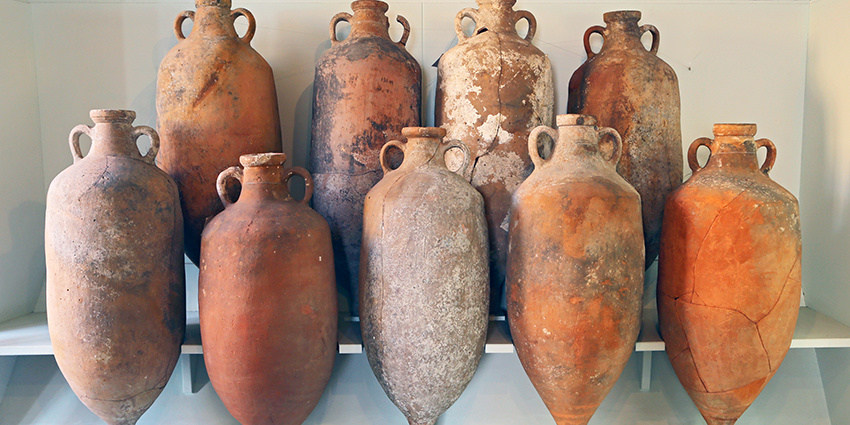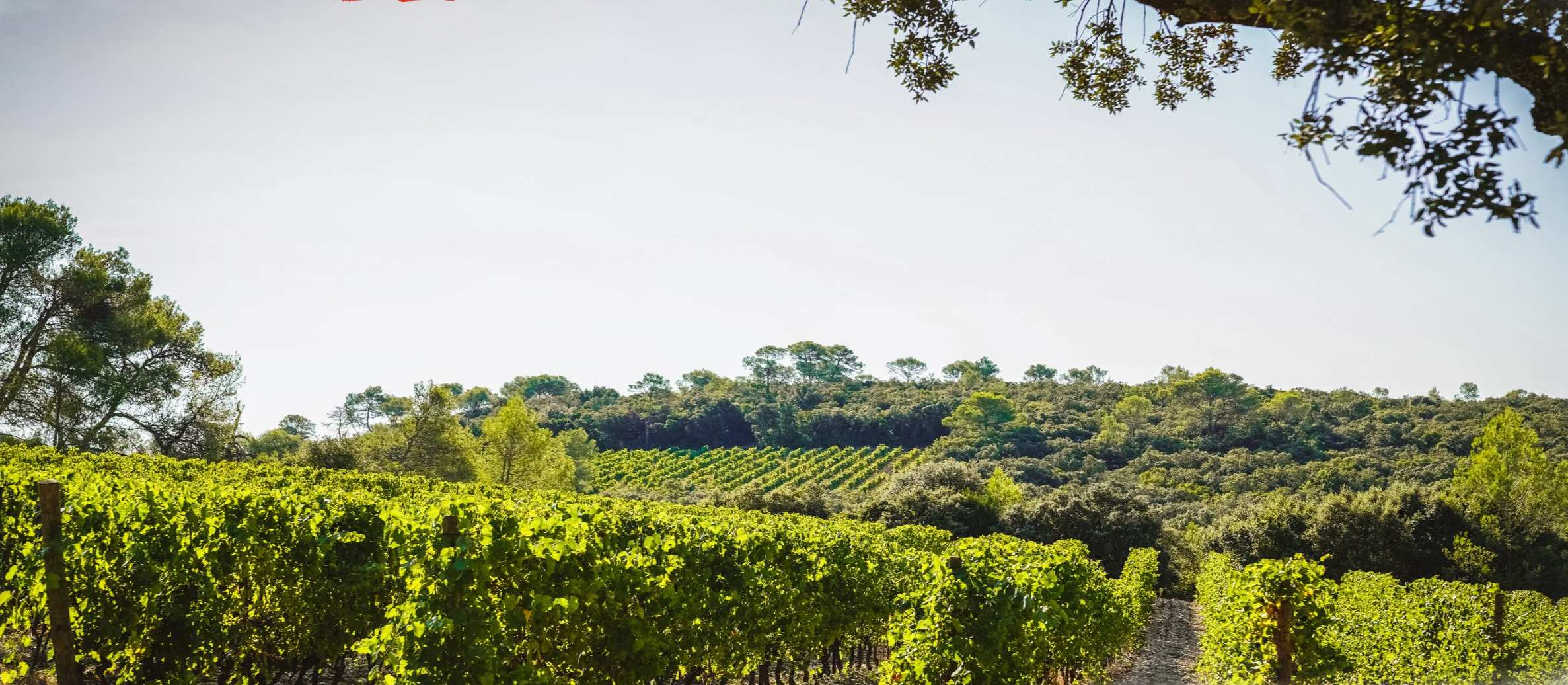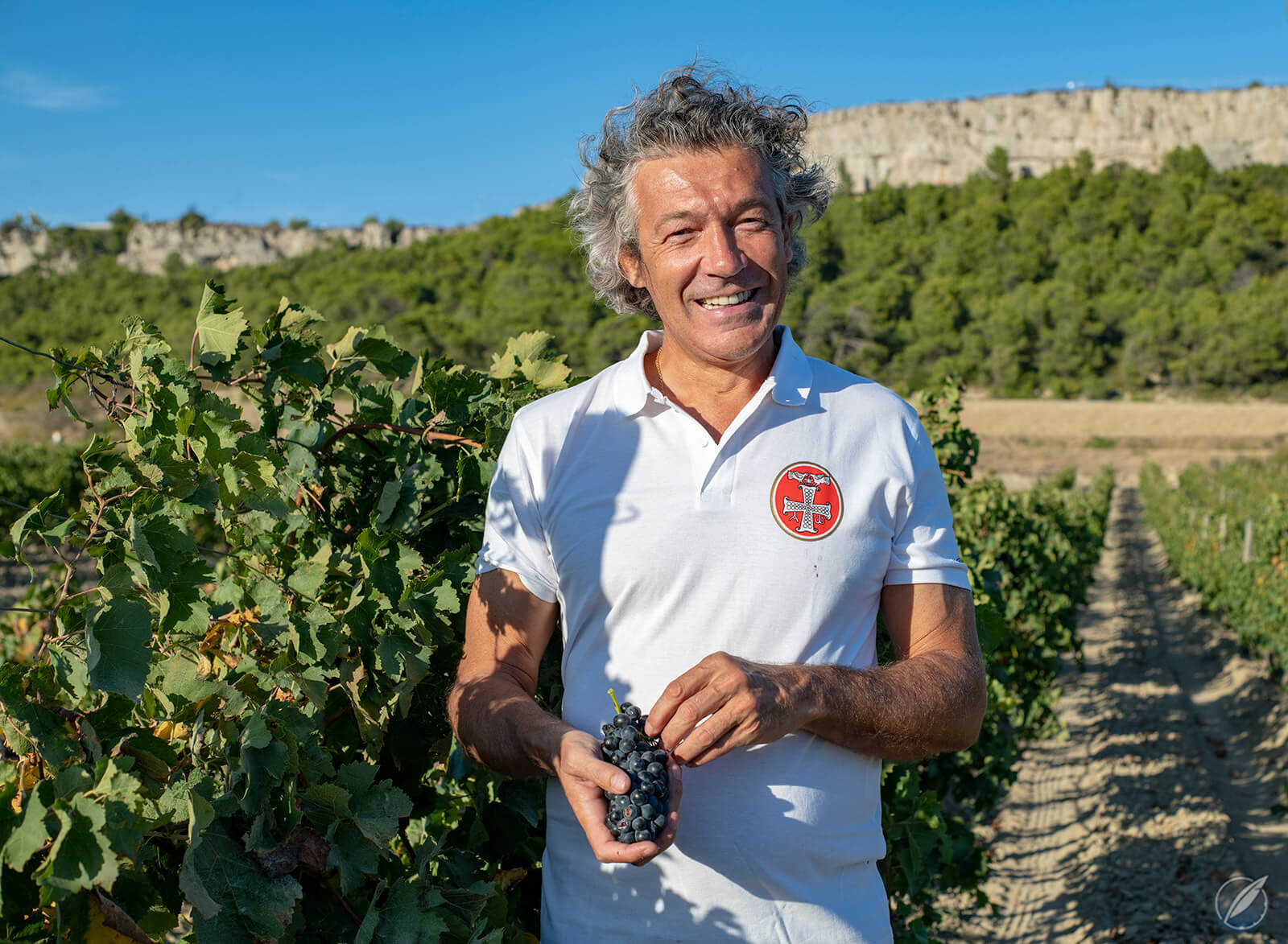Rosé, a wine style that ranges from fun to serious in the world of wine, has deep roots in our collective drinking culture. Some of the first wines ever recorded in history were Rosés, although a far cry from the Rosé wines we can find at wine stores today. From the wine style’s first creations as watered-down red wines to field blends including red and white grapes, followed by quickly made productions that shone pinky in colour – Rosé was not only the wine but beverage of choice for centuries. We can thank the Greeks and Romans and the entirety of the South of France for that. Rosé in the modern era is a wine that comes into the limelight as summer blooms, with June 11th, National Rosé Day, as the unofficial kick-off of the Rosé season.
While there are many Rosés out there to choose from, one man from the South of France has been hard at work putting Rosé, specifically Languedoc Rosé, on the map. Whether you know Gérard Bertrand or not, trust and believe you have seen his wines before. Two of his most notable Rosés being Coté des Roses and Gris Blanc. Scroll down to dive into the tasting notes of each.

two glasses of rose
A Mini-Dive Into The History of Rosé
The Greeks indeed created the first visions of Rosé people ever tasted. However, in France, this wine style was perfected to the point that it would be recognizable by the wine curious today. The thing is that the Rosés made by the Greeks were not intended to be Rosé wines. It was just a hilarious happening of circumstances. In ancient Greece, it was considered civilized to dilute wine with water. Furthermore, winemakers at the time would crush red and white grapes together, fermenting the juice, resulting in an off-dry and tannic style of wine. Mix this beverage with water, and you get what looks like a Rosé but is markedly different from the dramatic shift in the style later crafted in the South of France.

By the 6th century, the Phocaeans, a Greek explorer colony, brought grapevines to the south of France to Massalia (Modern day Marseille). They continued to make the wine style of their homeland, but this is the point where Rosé began to take on fame. The terroir, the sense of place that wine communicates in the glass, of Marseille was favoured by many in the Mediterranean at the time. So, when the Romans later landed in the region, they took the pink wines of Massalia and exported them through the reach of the Roman Empire—solidifying the South of France as the epicentre of Rosé to this very day.
If you wonder how we got from the first renditions of this wine style to the modern-day, that question is answered by time. Winemakers began to experiment with making wines from only red or a blend of red and white grapes to create Rosé wines that rang true to the vin de soif, ‘wine to quench thirst’ style of the drink. In the 19th century, a chilled glass of Rosé was thought of as an unfussy wine. The perfect complement on a hot day. Or as an aperitif. No one was in the mood to change that vibe.

Unlike in the past, winemaking techniques are top-notch now. Rosé wines get their colour from skin contact during the winemaking process. Red wine grapes are crushed, but the juice of the grapes is not separated from the skins just yet. Even just a couple of hours will result in a soft pink hue. Red and white grape mixes are still popular. In the Languedoc, you will find Rosé wines made from a blend of both. Rosé wines may be crisp and lively but may also show greater texture with a touch of oak aging. The world of Rosé is more vast now than it has ever been before.
Gérard Bertrand, Repping the Languedoc Through and Through
The Languedoc is an up-and-coming region in France and the largest wine region globally, the country’s leading winemaking area for Rosé wines. The winemaking region makes up 34% of the country’s pink wine and 11% of the Rosé wines in the world. However, Languedoc sometimes gets the short end of the stick. Often not getting the praise as a top winemaking region. The area is perfect for Rosé, but the previous notation of the place being only for bulk wine has got to change.

Receiving the fitting nickname of the Prince of the Languedoc, Gérard Bertrand has been on a mission to debunk the myth that quality wines can’t be made in the region. A third-generation winegrower Gérard was introduced to the world of wine at the ripe old age of 10 by his father, Georges. Only 12 years later, he would be taking over the family estate at 22. For years he managed to bring together two different sides of his life, as a rugby player and winery owner, but once he grew into his 30s, Gérard shifted to focusing full-time on wine and wine alone. Knowing this man’s story, it is hard not to believe that his drive to put Languedoc wines on the map comes from his sporting spirit.
Languedoc stretches in a crescent shape between Provence in the east and the region of Roussillon in the south. Grapevines thrive here effortlessly. The area is perfect for biodynamic and organic viticulture. Compared to its famous Rosé making neighbour in the east, the Languedoc has more wiggle room for creating wines with intention. Putting the region on the map was Gérard’s dream, and he has indeed done it.

Making wine biodynamically, Gérard takes a sustainable and holistic approach to winemaking. He believes a balance between humankind and nature shows the region at its best in the glass. And it must be working. His wines tout top awards and are some of the top sellers in many countries. While also making wines on both ends of the price spectrum. Gérard is responsible for some of the most expensive and most accessible Rosé wines on the planet. Two notable favourites on the accessible side are the Coté des Roses and the Gris Blanc.
The Vibe – Rosé All Day

A celebration of the Mediterranean lifestyle of Languedoc, this is a wine that imbibes the feeling of the region. Made with the classic regional red grapes of Grenache, Syrah and Cinsault, each grape is crafted into a wine separately and then blended to create the final libation. Served up in a glass bottle that evokes the namesake of the wine, roses, designed by the Ecole Boulle.
This pink-coloured wine is an LCBO staple, on shelves at $19.95. The wine shows notes of orange and grapefruit citrus, cassis, red currant, roses, and white raspberries in the glass. Taste and you are in for a fresh, generous and inviting wine that is delightful, balanced and long-lasting on the palate.

Showcasing a terroir that surrounds the home base of Gérard Bertrand himself, near the town of Narbonne, the Gris Blanc is made from vines grown in the region of Tautavel. In an area that sits right between the Mediterranean Sea and the Pyrenees Mountains, the dry and sun-drenched terroir of the region is perfect for the grape Grenache, which is the sole grape of this wine.
A fresh and crystal clear wine from the South of France, this pale-hued wine has a unique and original profile. Find it on LCBO shelves for $15.95 and show off aromas of red berries, wild strawberry, white pepper, and a seaside vibe. The palate continues to add depth to the wine. Fresh and elegant with a texture that feels like a pillow sitting atop the tongue, this wine ends with bright minerality and a memorable lift.


